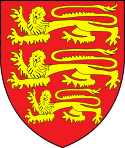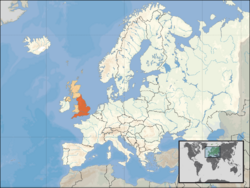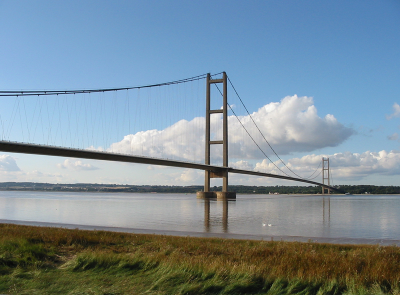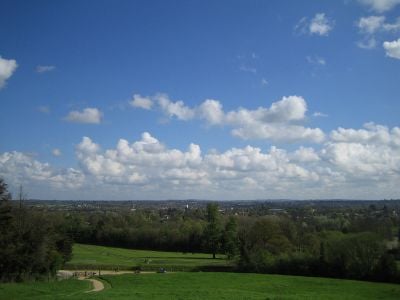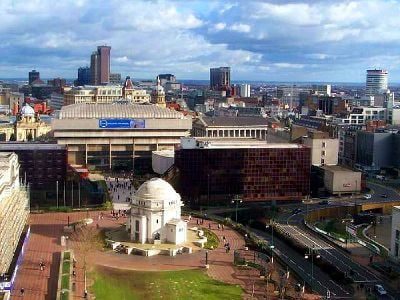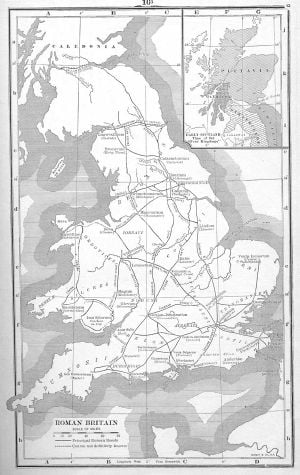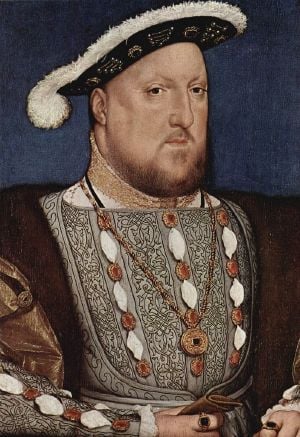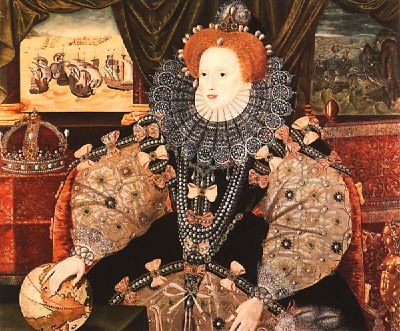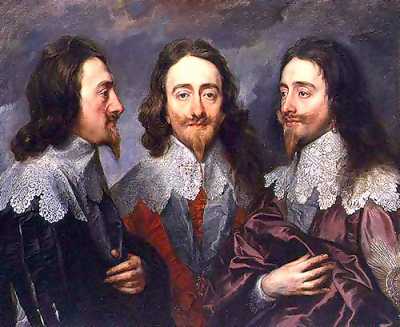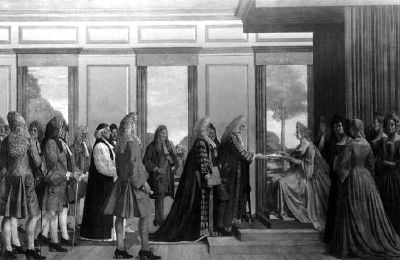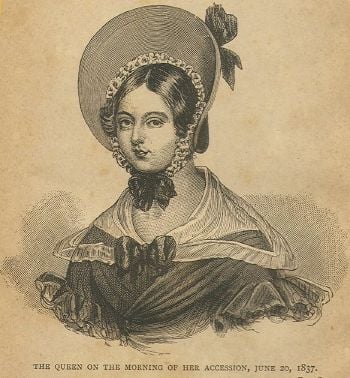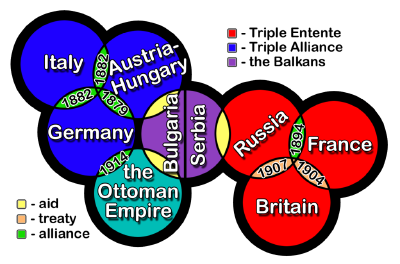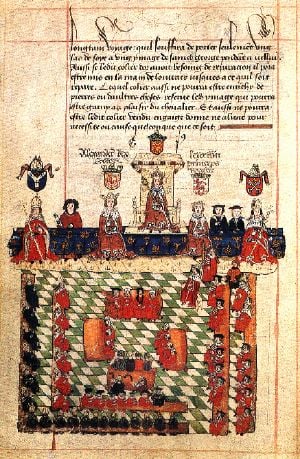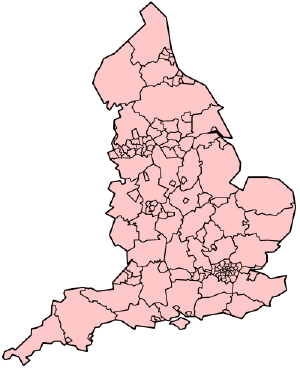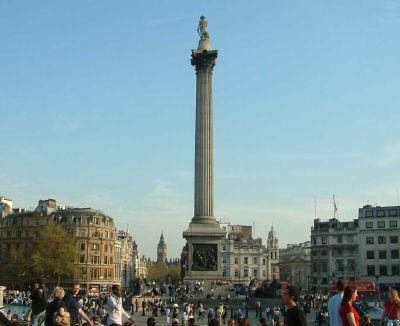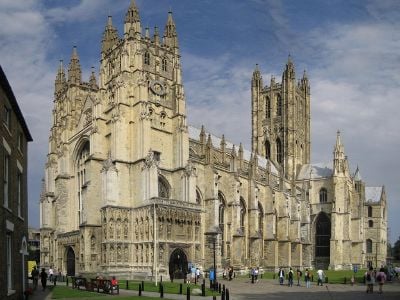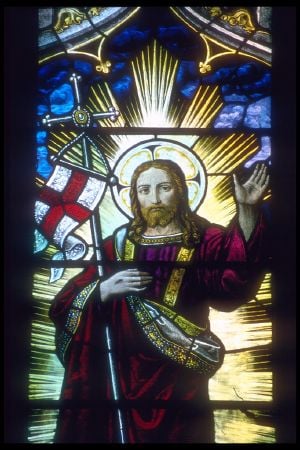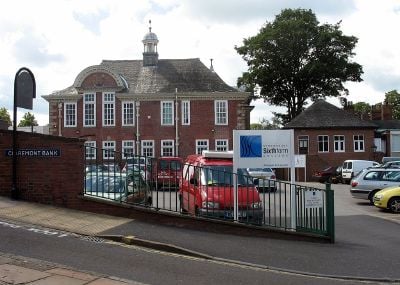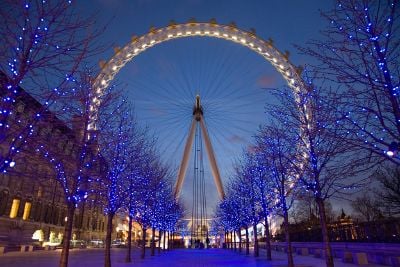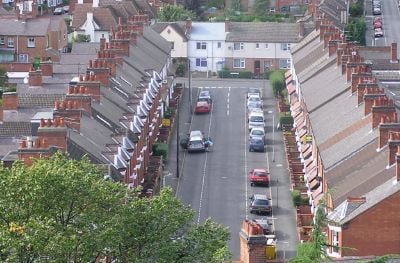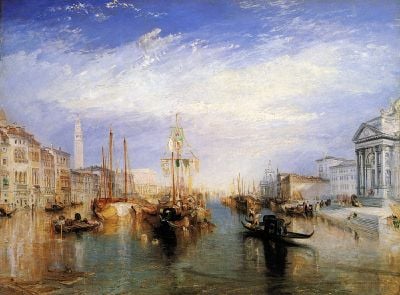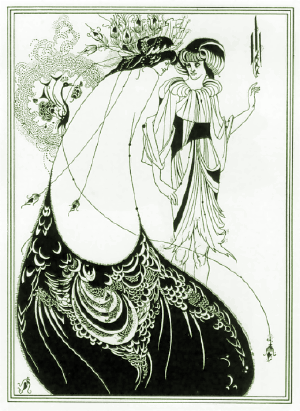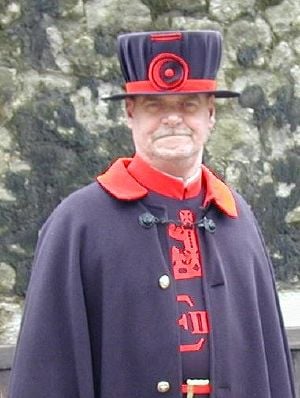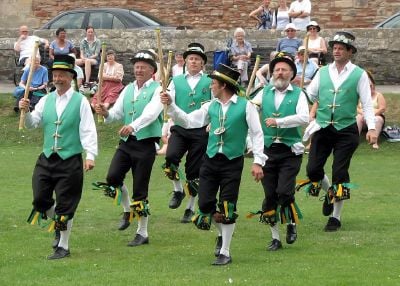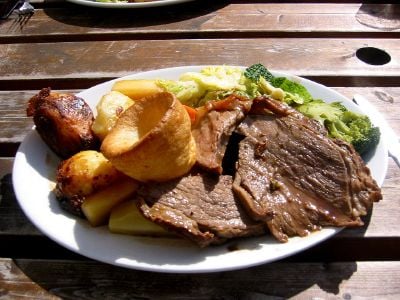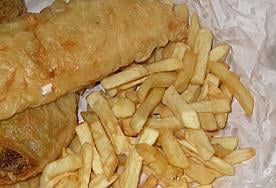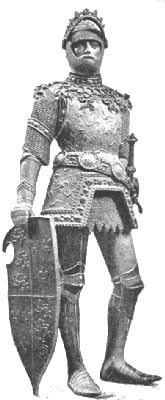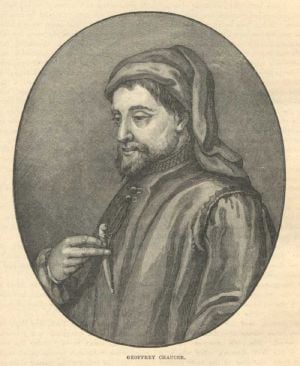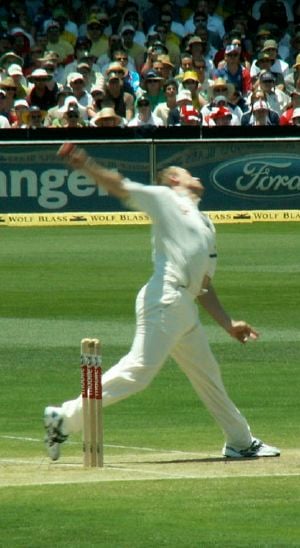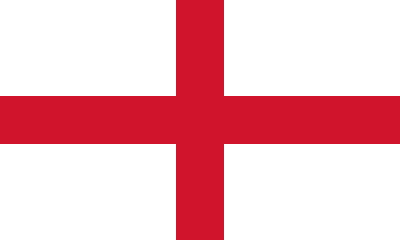England
England |
||||||
|---|---|---|---|---|---|---|
|
||||||
| Motto: Dieu et mon droit (French) "God and my right"[1][2] |
||||||
| Anthem: None (de jure) God Save the King (de facto) |
||||||
| Location of England (orange) – on the European continent (camel white) – in the United Kingdom (camel) |
||||||
| Capital (and largest city) | London 51°30′N 0°7′W | |||||
| Official languages | English (de facto)[3] | |||||
| Recognized regional languages | Cornish | |||||
| Ethnic groups (2011) | 85.4% White, 7.8% Asian, 3.5% Black, 2.3% Mixed, 0.4% Arab, 0.6% Other | |||||
| Demonym | English | |||||
| Government | Non-devolved state within a constitutional monarchy | |||||
| - | Monarch | Charles III | ||||
| - | Prime Minister of the United Kingdom | Rishi Sunak | ||||
| Legislature | Parliament of the United Kingdom | |||||
| Establishment | ||||||
| - | Unification of Angles, Saxons and Danes | July 12, 927 | ||||
| - | Union with Scotland | May 1, 1707 | ||||
| Area | ||||||
| - | Total | 130,395 km² 50,346 sq mi |
||||
| Population | ||||||
| - | 2017 estimate | |||||
| - | 2021 census | |||||
| - | Density | 434/km² 1,124.1/sq mi |
||||
| Currency | Pound sterling (GBP) |
|||||
| Time zone | GMT (UTC0) | |||||
| - | Summer (DST) | BST (UTC+1) | ||||
| Internet TLD | .uk[5] | |||||
| Calling code | +44 | |||||
| Patron saint | Saint George | |||||
England is the largest and most populous constituent country of the United Kingdom of Great Britain and Northern Ireland and is located to the north-west of mainland Europe.
England is often mistakenly considered the same as the United Kingdom, or the same as the island of Great Britain, which consists of England, Scotland, and Wales. However, England no longer officially exists as an administrative or political unit—as do Scotland, Wales, and Northern Ireland, which have varying degrees of self-government in domestic affairs.
England became a unified state during the tenth century and takes its name from the Angles, one of a number of Germanic tribes who settled in the territory during the fifth and sixth centuries.
England ranks among the world's most influential centers of cultural development. It is the place of origin of the English language and the Church of England, and English law forms the basis of the legal systems of many countries. The nation was the center of the British Empire, and the birthplace of the Industrial Revolution. England is home to the Royal Society, which laid the foundations of modern experimental science. England was the world's first parliamentary democracy and consequently many constitutional, governmental and legal innovations that had their origin in England have been widely adopted by other nations.
The Kingdom of England was a separate state until May 1, 1707, when the Acts of Union resulted in a political union with the Kingdom of Scotland to create the Kingdom of Great Britain.
Geography
The mainland territory of England occupies most of the southern two-thirds of the island of Great Britain and shares land borders with Scotland to the north and Wales to the west. Elsewhere, it is bordered by the North Sea, Irish Sea, Atlantic Ocean, and English Channel.
England comprises the central and southern two-thirds of the island of Great Britain, plus offshore islands of which the largest is the Isle of Wight. It is bordered to the north by Scotland and to the west by Wales. It is closer to continental Europe than any other part of Britain, and is only 24 miles (52 km) from France. The Channel Tunnel, near Folkestone, directly links England to the European mainland. The English/French border is halfway along the tunnel.
England's land area is 50,319 square miles (130,325 square kilometers), or slightly smaller than Louisiana in the United States.
Most of England consists of rolling hills, but it is more mountainous in the north with a chain of low mountains, the Pennines, dividing east and west. The dividing line between terrain types is usually indicated by the Tees-Exe line. There is also an area of flat, low-lying marshland in the east, the Fens, much of which has been drained for agricultural use.
The highest point in England is Scafell Pike, which at 3208 feet (978 meters) is part of the Cumbrian Mountains in North West England. Other mountain ranges and hills in England include the Chilterns, Cotswolds, Dartmoor, Lincolnshire Wolds, Exmoor, Lake District, Malvern Hills, Mendip Hills, North Downs, Peak District, Salisbury Plain, South Downs, Shropshire Hills, and Yorkshire Wolds.
England has a temperate climate, with plentiful rainfall all year round. Temperatures rarely fall below 23°F (-5°C) or rise above 86°F (30°C), although they can be quite variable. The prevailing wind is from the south-west, bringing mild and wet weather from the Atlantic Ocean. It is driest in the east and warmest in the south, which is closest to the European mainland. Snowfall can occur in winter and early spring.
England's best-known river is the Thames, which flows through London. At 215 miles (346km), it is the longest river in England. The River Severn is the longest in total, but it flows from the mountains of Wales, and the parts which run through England are shorter than the Thames. Other rivers include the Trent, Humber, Tyne, Tees, Ribble, Ouse, Mersey, Dee, and Avon.
The largest natural harbor is at Poole, on the south-central coast.
Originally, oak forests covered the lowlands, while pine forests and patches of moorland covered the higher or sandy ground. Much forest has been cleared for cultivation. Oak, elm, ash, and beech are the most common trees in England.
Wolves, bears, boars, and reindeer are extinct, but red and roe deer are protected for sport. Foxes, hares, hedgehogs, rabbits, weasels, stoats, shrews, rats, and mice are common, otters are found in many rivers, and seals appear along the coast. The chaffinch, blackbird, sparrow, and starling are the most numerous of the 230 species of birds there, and another 200 are migratory. Game birds—pheasants, partridges, and red grouse—are protected. The rivers and lakes contain salmon, trout, perch, pike, roach, dace, and grayling.
Agriculture is intensive, highly mechanized, and efficient by European standards, producing about 60 percent of food needs with only one percent of the labor force. It contributes around two percent of GDP. Around two thirds of production is devoted to livestock, and one third to arable crops.
The capital city of England is London, which is the largest city in Great Britain, and the largest city in the European Union by most measures. The ancient City of London still retains its tiny medieval boundaries; but the name "London" has long applied more generally to the whole metropolis which has grown up around it. An important settlement for around two millennia, London is today one of the world's leading business, financial and cultural centers, and its influence in politics, education, entertainment, media, fashion, and the arts all contribute to its status as one of the major global cities.
Birmingham is the second largest, both in terms of the city itself and its urban conurbation. A number of other cities, mainly in central and northern England, are of substantial size and influence. These include: Manchester, Leeds, Liverpool, Newcastle, Sheffield, Bristol, Coventry, Leicester, Nottingham, and Hull.
History
Prehistoric England
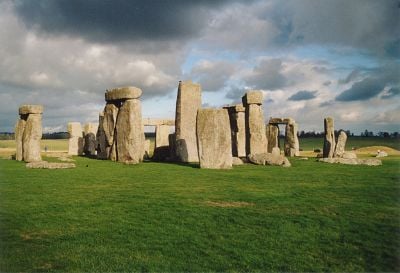
Cro-Magnons (the first anatomically modern humans) are believed to have arrived in Europe about 40,000 years ago, and lived in the region that was to become England by 27,000 years ago. Up to around 6000 B.C.E., England was connected to Europe, and was easily accessible by nomadic hunter-gatherers. Around 4000 B.C.E., Neolithic immigrants brought agriculture, used stone tools, buried their dead in communal graves of stone or mounds of earth, and conducted rituals at henge monuments. From around 2300 B.C.E., Beaker folk, who buried their dead in individual graves, often with a drinking vessel, arrived from the Low Countries and middle Rhine. These people knew how to work copper and gold. Wessex chieftains dominated trade, and ensuing prosperity enabled these chieftains to build the large bluestone monoliths known as Stonehenge.
The Celts
From the eighth century B.C.E., Celts arrived, and hill forts began to appear. A succession of migrations took place from 700 B.C.E. to 400 B.C.E. Settlements had a traditional round house, and farming was characterized by small fields, and storage pits for grain. Iron daggers were made, then swords, and with increasing pressure on resources, increasing numbers of hill forts were built.
Romans invade
The first Roman invasion of the British Isles was led by Julius Caesar in 55 B.C.E.; the second, a year later in 54 B.C.E. Although no territory was taken for the Roman Empire on either occasion, this was the start of the Roman settlement of Britain. The Romans had many supporters among the Celtic tribal leaders, who agreed to pay tributes to Rome in return for Roman protection. The Romans returned in 44 C.E., led by Claudius, this time establishing control, and establishing a province Britannia. Initially an oppressive rule, gradually the new leaders gained a firmer hold on their new territory which at one point stretched from the south coast of England to Wales and as far away as Scotland (though they did not hold the latter for long). Hadrian's Wall, built on the Solway-Tyne isthmus (122 C.E.-130 C.E.) marked the frontier of Roman civilization.
Over the approximately 350 years of Roman occupation of Britain, the majority of settlers were soldiers garrisoned on the mainland. It was with constant contact with Rome and the rest of Romanized Europe through trade and industry that the native Britons themselves adopted Roman culture and customs.
Christianity introduced
Christianity is thought to have come from three directions—from Rome (via Roman merchants and soldiers), and from Scotland and Ireland. Christianity made little headway until the late fourth century, initially among wealthy villa owners. By the end of Roman rule, in 410 C.E., Christian leaders followed the teachings of the Briton Pelagius (354-420), considered heretical, because he denied the doctrine of original sin, and emphasized the importance of the human will over divine grace in attaining salvation. This philosophy of self-reliance is a British characteristic. St Augustine (who died in 604) was the first Archbishop of Canterbury. The Synod of Whitby in 685 ultimately led to the English Church being fully part of Roman Catholicism.
Anglo-Saxon England

The history of Anglo-Saxon England covers the history of early medieval England from the end of Roman Britain and the establishment of Anglo-Saxon kingdoms in the fifth century until the Conquest by the Normans in 1066. It is speculated that the first Germanic immigrants to Britain arrived at the invitation of the Roman rulers. The traditional division into Angles, Saxons and Jutes is first seen in the Historia ecclesiastica gentis Anglorum by Bede, however historical and archaeological research has shown that a wider range of Germanic peoples from the coast of Frisia, Lower Saxony, Jutland, and Southern Sweden moved to Britain in this era. After the withdrawal of the last legions in the early fifth century, the number of newcomers increased, and it is speculated that relations with the ruling Romanized Britons became strained.
By about 449, open conflict had broken out, and the immigrants began to establish their own kingdoms in what would eventually become the Heptarchy, the seven petty kingdoms which eventually merged to become the Kingdom of England: Northumbria, Mercia, East Anglia, Essex, Kent, Sussex, and Wessex. As early as the time of Ethelbert of Kent (560-616), one king could be recognized as Bretwalda ("Lord of Britain"). The title fell in the seventh century to the kings of Northumbria, in the eighth to those of Mercia, and finally, in the ninth, to Egbert of Wessex, who in 825 defeated the Mercians at the Battle of Ellendun. In the next century his family came to rule all England.
Vikings
The earliest Viking raid on Britain was 789 when, according to the Anglo-Saxon Chronicle, Portland was attacked. A more reliable report dates from June 8, 793, when the monastery at Lindisfarne on the east coast of England was pillaged. These raiders, whose expeditions extended well into the ninth century, were gradually followed by settlers who brought a new culture and tradition markedly different from that of the prevalent Anglo-Saxon society. These enclaves expanded, and soon Viking warriors established areas of control that could be described as kingdoms. Viking conquest of large parts of England established the Danelaw, a name given to northern and eastern England in which the laws of the Danes held predominance over those of the Anglo-Saxons.
The Kingdom of England
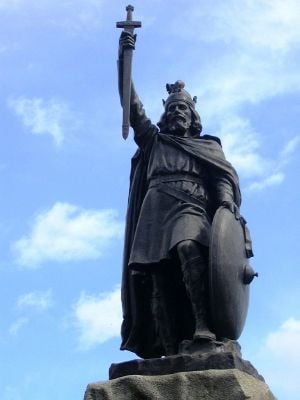
Originally, England (or Angleland) was a geographical term to describe the territory of Britain which was occupied by the Anglo-Saxons, rather than a name of an individual nation-state. During the ninth century, the southern Anglo-Saxon kingdom of Wessex came to dominate other kingdoms in England (especially as a result of the extinction of rival lines in England during the First Viking Age). Alfred the Great (849-899), who was king of Wessex from 871 to 899, defeated the Viking Guthrum at the Battle of Edington in 878.
England was unified in 927 by Athelstan. For several hundred years, the Kingdom of England would fall in and out of power between several Wessex and Danish kings. For over half a century, the unified Kingdom of England became part of a vast Danish empire under Canute the Great (995-1035), before regaining independence for a short period under the restored West-Saxon lineage of Edward the Confessor(1004-1066).
The Kingdom of England (including Wales) continued to exist as an independent nation-state right through to the Acts of Union and the Union of Crowns. However the political ties and direction of England were changed forever by the Norman Conquest in 1066.
Norman conquest
William the Conqueror (Duke of Normandy) landed in England in September 1066 to assert his claim to the throne. The Saxon king Harold II had just destroyed an invading Norwegian Viking army under King Harald Hardråda, ending the Viking age. William's success at the Battle of Hastings (October 14, 1066), in which the Saxon king Harold II was killed, resulted in the Norman control of England. William ordered the compilation of the Domesday Book, a survey of the entire population and their lands and property for tax purposes. The Norman conquest was a pivotal event in English history for a number of reasons. This conquest linked England more closely with Continental Europe through the introduction of a Norman aristocracy, thereby lessening Scandinavian influence. It created one of the most powerful monarchies in Europe and engendered a sophisticated governmental system. The use of the Anglo-Norman language by the aristocracy endured for centuries and left an indelible mark in the development of modern English. The conquest changed the English culture, and set the stage for rivalry with France, which would continue intermittently until the twentieth century. It has an iconic role in English national identity as the last successful military conquest of England.
The Middle Ages
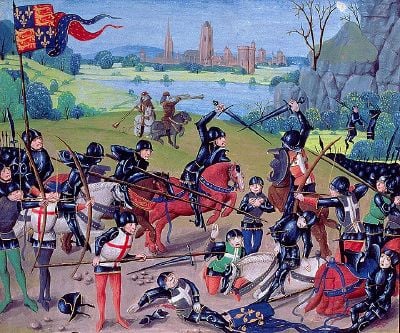
The English Middle Ages, which lasted from 1066 until conflicts over the English throne between the Houses of Lancaster and York, known as the Wars of the Roses, ended in 1487, were characterized by civil war, international war, occasional insurrection, and widespread political intrigue among the aristocratic and monarchic elite. England was an important part of expanding and dwindling empires based in France, with the "King of England" being a subsidiary title of a succession of French-speaking Dukes of territories in what became France. English kings used England as a source of troops to enlarge their personal holdings in France for the duration of the Hundred Years' War (1337 to 1453). In fact the English crown did not relinquish its last foothold on mainland France until Calais was lost during the reign of Mary Tudor (the Channel Islands remain crown dependencies).
The Principality of Wales, under the control of English monarchs from the Statute of Rhuddlan in 1284, became part of the Kingdom of England by the Laws in Wales Acts 1535–1542. Wales shared a legal identity with England as the joint entity originally called "England" and later "England and Wales."
Magna Carta
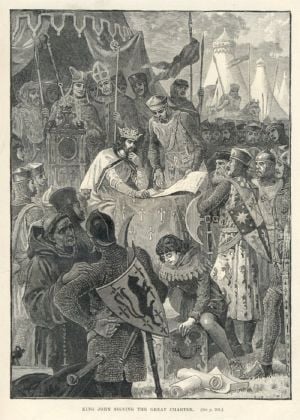
The signing of the Magna Carta in 1215, had lasting impact. King John (1166 – 1216) suffered the loss of Normandy and numerous other French territories following the disastrous Battle of Bouvines in 1214. He managed to antagonize the feudal nobility and leading Church figures to the extent that in 1215, they led an armed rebellion and forced him to sign the Magna Carta, which required the king to renounce certain rights, respect certain legal procedures and accept that "the will of the king could be bound by law." It established that the king may not levy or collect any taxes (except the feudal taxes to which they were hitherto accustomed) without the consent of a council. Magna Carta was the most significant early influence on the long historical process that led to the rule of constitutional law.
The Black Death
An epidemic of catastrophic proportions, the Black Death first reached England in the summer of 1348. The Black Death is estimated to have killed between a third and two-thirds of Europe's population. England alone lost as many as 70 percent of its population, which passed from seven million to two million in 1400. The plague repeatedly returned to haunt England throughout the fourteenth to seventeenth centuries. The Great Plague of London in 1665–1666 was the last plague outbreak.
The English Reformation
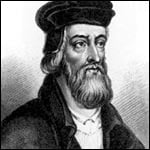
During the English Reformation, the external authority of the Roman Catholic Church in England was abolished and replaced with a Church of England, outside the Roman Catholic Church, under the Supreme Governance of the English monarch. The English Reformation differed from its European counterparts in that it was a political, rather than purely theological, dispute at root.
John Wycliffe (c. 1320–1384), an English theologian and early proponent of reform in the Roman Catholic Church, worked tirelessly on an English translation of the Bible in one complete edition. Since his beliefs and teachings seemed to compare closely with Luther, Calvin, and other reformers, historians have called Wycliffe "The Morning Star of the Reformation." The itinerant preachers, called Lollards, Wycliffe sent throughout England, created a spiritual revolution. Intense persecution, from both the religious and secular authorities, cracked down on the Lollards sending the movement underground.
John Wycliffe denied the doctrine of transubstantiation, which holds that the bread and wine used in the Eucharist changes in substance into the body and blood of Jesus. He was condemned in a Papal Bull in 1410, and all his books were burned. The seeds of reform that Wycliffe planted were not to blossom until a couple hundred years later.
The Tudors
The relatively unknown Henry Tudor, Henry VII, won the final conflict in the Wars of the Roses, the Battle of Bosworth Field in 1485, where the Yorkist Richard III was killed, thus beginning the Tudor period, which lasted until the death of Queen Elizabeth I in 1603.
King Henry VIII (1491-1547) split with the Roman Catholic Church over a question of his divorce from Catherine of Aragon. Though his religious position was not at all Protestant, the resultant schism ultimately led to England distancing itself almost entirely from Rome. There followed a period of great religious and political upheaval, which led to the English Reformation, the royal expropriation of the monasteries and much of the wealth of the church. The dissolution of the monasteries had the effect of giving many of the lower classes (the gentry) a vested interest in the Reformation continuing, for to halt it would be to revive Monasticism and restore lands which were gifted to them during the Dissolution.
Henry VIII had one legitimate child and two illegitimate children who survived him. Edward VI of England, Henry's legitimate heir, was only a boy of 10 when he took the throne in 1547. When Edward VI lay dying of tuberculosis in 1553, Mary I (1516-1558) took the throne amidst popular demonstration in her favor in London. Mary, a devout Catholic, also known as Bloody Mary, tried to re-impose Catholicism, which led to 274 burnings of Protestants, which are recorded especially in John Foxe's Book of Martyrs. She was highly unpopular among her people, and the Spanish party of her husband, Philip II caused resentment around Court. Mary died at the age of 42, to be succeeded by her half-sister, who became Elizabeth I.
The reign of Elizabeth restored a sort of order to the realm. The religious issue, which had divided the country since Henry VIII, was put to rest by the Elizabethan Religious Settlement, which created the Church of England in much the same form we see it today. The Act of Supremacy of 1559 re-established the English church’s independence from Rome, with parliament conferring on Elizabeth the title Supreme Governor of the Church of England, while the Act of Uniformity of 1559 set out the form the English church would take, including establishing the Book of Common Prayer, and phrasing the delicate issue of transubstantiation. Much of Elizabeth's success was in balancing the interests of the Puritans (radical Protestants) and "die-hard" Catholics.
The slave trade that established Britain as a major economic power can be attributed to Elizabeth, who granted John Hawkins the permission to commence trading in 1562. The number of Africans transported to England was so great due to the slave trade that by 1596, Elizabeth complained. She tried unsuccessfully to expel them via a Proclamation in 1601.
The Stuarts
Elizabeth died in 1603 without leaving any direct heirs. Her closest male Protestant relative was the King of Scots, James VI, of the House of Stuart, who, following the Union of the Crowns, became King James I of England. King James I & VI as he was styled became the first king of the entire island of Great Britain, though he continued to rule the Kingdom of England and the Kingdom of Scotland separately. James survived a number of assassination attempts, notably the Main Plot and Bye Plots of 1603, and most famously, on November 5, 1605, the Gunpowder Plot, by a group of Catholic conspirators, led by Guy Fawkes, which was stoked up and served as further fuel for antipathy in England towards the Catholic faith.
British colonies
Plantations in Ireland, from 1608, formed a pattern for establishing colonies, and several people involved in those projects also had a hand in the early colonization of North America—Humphrey Gilbert, Walter Raleigh, Francis Drake and Ralph Lane. In 1607, England built an establishment in Virginia (Jamestown), in what was to become the United States of America. This was the beginning of English colonization. Many English settled in North America for religious or economic reasons. While the first party religious pilgrims left for the New World in 1620, in the second half of the seventeenth century, those numbers increased dramatically, as these religious pilgrims sought a land where they could worship freely.
The English merchants holding plantations in the warm southern parts of America then resorted rather quickly to the slavery of Native Americans and imported Africans in order to cultivate their plantations and sell raw material (particularly cotton and tobacco) in Europe. The English merchants involved in colonization accrued fortunes equal to those of great aristocratic landowners in England, and their money, which fueled the rise of the middle class, permanently altered the balance of political power.
The empire took shape during the early seventeenth century, with the English settlement of the eastern colonies of North America, which would later become the original United States, as well as Canada's Atlantic provinces, and the colonization of the smaller islands of the Caribbean such as Saint Kitts, Barbados and Jamaica. The sugar-producing colonies of the Caribbean, where slavery became central to the economy, were at first England's most important and lucrative colonies.
Civil war
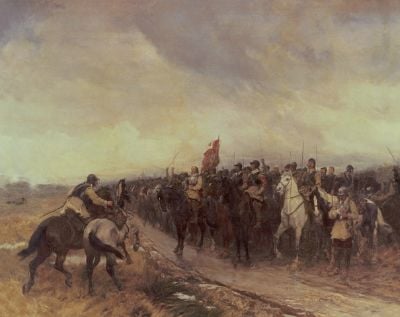
The English Civil War was a series of armed conflicts and political machinations which took place between Parliamentarians and Royalists from 1642 until 1651. The English Civil War broke out in 1642, largely as a result of an ongoing series of conflicts between James' son, Charles I, and Parliament. The defeat of the Royalist army by the New Model Army of Parliament at the Battle of Naseby in June 1645 effectively destroyed the king's forces. Charles surrendered to the Scottish army at Newark. He was handed over to the English Parliament in early 1647. He escaped and the Second English Civil War began, although it was to be only a short conflict, with parliament quickly securing the country. The capture and subsequent trial of Charles led to his beheading in January 1649 at Whitehall Gate in London. The Civil War ended with the Parliamentary victory at the Battle of Worcester on September 3, 1651. The English monarchy was replaced with the Commonwealth of England (1649–1653) and then with a Protectorate (1653–1659), under the personal rule of Oliver Cromwell. After a brief return to Commonwealth rule, in 1660 The Crown was restored and Charles II accepted parliament's invitation to return to England.
During this period from 1649-1660, known as the "interregnum," the monopoly of the Church of England on Christian worship in England came to an end, and the victors consolidated the already-established Protestant Ascendancy in Ireland. Constitutionally, the wars established a precedent that British monarchs could not govern without the consent of Parliament although this would not be cemented until the Glorious Revolution later in the century.
In 1665, the plague, swept through London, and in 1666, the Great Fire raged for five days, destroying approximately 15,000 buildings.
Glorious Revolution
The death of Charles II in 1685 meant his Catholic brother was crowned King James II & VII. England with a Catholic King on the throne was too much for both people and parliament and in 1689 the Dutch Protestant Prince William of Orange was invited to replace King James II in what became known as the Glorious Revolution. Despite attempts to secure his reign by force, James was finally defeated by William at the Battle of the Boyne in 1690. On February 13, 1689, parliament passed the Declaration of Right, in which it deemed that James, by attempting to flee on December 11, 1688, had abdicated the government of the realm, thereby leaving the Throne vacant. William and Mary were crowned together at Westminster Abbey on April 11, 1689.
William III of England encouraged the passage of the Act of Toleration 1689, which guaranteed religious toleration to certain Protestant nonconformists. It did not, however, extend toleration to Roman Catholics or those of non-Christian faiths. Thus the Act was not as wide-ranging as James II's Declaration of Indulgence, which attempted to grant freedom of conscience to people of all faiths.
However, in parts of Scotland and Ireland Catholics loyal to James remained determined to see him restored to the throne and there followed a series of bloody though unsuccessful uprisings. As a result of these, any failure to pledge loyalty to the victorious King William was severely dealt with. The most infamous example of this policy being the Massacre of Glencoe in 1692. Jacobite rebellions continued on into the mid-eighteenth century until the son of the last Catholic claimant to the throne, |James III & VIII, mounted a final campaign in 1745. The Jacobite forces of Prince Charles Edward Stuart, the "Bonnie Prince Charlie" of legend, were resoundingly defeated at the Battle of Culloden in 1746.
United Kingdom formed
Under the Acts of Union 1707, England (including Wales) and Scotland, which had been in personal union since the Union of the Crowns in 1603, agreed to a political union in the form of a unified Kingdom of Great Britain. The Act of Union 1800 united the Kingdom of Great Britain with the Kingdom of Ireland, which had been gradually brought under English control between 1541 and 1691, to form the United Kingdom of Great Britain and Ireland in 1801.
Since 1707, England, while ceasing to exist as an independent political entity, has remained highly dominant in what is now the United Kingdom of Great Britain and Northern Ireland. Due to her geographic size and large population, the dominant political and economic influence in the UK stems from England. London has remained the capital city of the UK and has built upon its status as the economic and political center of the UK.
Enlightenment Britain
Britain was an important part of the Age of Enlightenment with philosophical and scientific input and a literary and theatrical tradition. Over the next century England played an important role in developing Western ideas of parliamentary democracy, partly via the emergence of a multi-party system, as evidenced in the rise of the Whig and Tory political parties. There were significant contributions to literature, the arts and science. But, like other Great Powers, England was involved in colonial exploitation, including the infamous Atlantic slave trade, until the passing of the 1807 Slave Trade Act made Great Britain the first nation to permanently prohibit trade in slaves.
Confidence in the rule of law, which followed establishment of the prototype of constitutional monarchy in Britain in the Glorious Revolution of 1688, and the emergence of a stable financial market there based on the management of the national debt by the Bank of England, contributed to the capacity for, and interest in, private financial investment in industrial ventures. In addition, Britain had an entrepreneurial class which believed in progress, technology and hard work. This Protestant work ethic has been regarded as one of the cornerstones of national prosperity.
The British Empire
After the defeat of Napoleon Bonaparte (1769-1821) in the Napoleonic Wars (1804-1815), Britain became the principal naval power of the nineteenth century. At its peak, the British Empire was the largest empire in history and for a substantial time was the foremost global power.
The Industrial Revolution
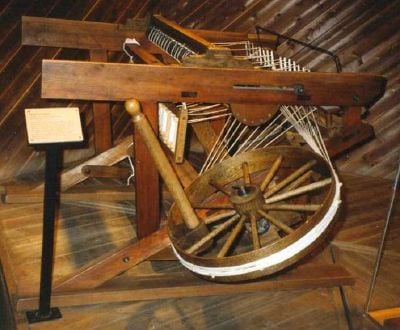
England led the Industrial Revolution, a period in the late eighteenth and early nineteenth centuries when technological advances and mechanization transformed a largely agrarian society throughout Europe, causing considerable social upheaval. Much of the agricultural workforce was uprooted from the countryside and moved into large urban centers of production, as the steam-based production factories could undercut traditional cottage industries. The consequent overcrowding into areas with little supporting infrastructure saw dramatic increases in the rise of infant mortality (to the extent that many Sunday schools for pre-working age children, five or six, had funeral clubs to pay for each other's funeral arrangements), crime, and social deprivation. Many workers saw their livelihoods threatened by the process, and some frequently sabotaged or attempted to sabotage factories. These saboteurs were known as Luddites.
Suffrage extended
During the early nineteenth century, the working classes began to find a voice. Concentrations of industry led to the formation of guilds and unions, which, although at first suppressed, eventually became powerful enough to resist government policy. Chartism is thought to have originated from the passing of the 1832 Reform Bill, which gave the vote to the majority of the (male) middle classes, but not to the "working class." Many people made speeches on the "betrayal" of the working class and the "sacrificing" of their "interests" by the "misconduct" of the government. In 1838, six members of Parliament and six working men formed a committee, which then published the People's Charter.
But by the end of the Victorian era (1900), England lost its industrial leadership, particularly to the United States, which surpassed England in industrial production and trade in the 1890s, as well as to the German Empire.
Victorian England
England's Victorian era marked the height of the British Industrial Revolution and the apex of the British Empire. Although commonly used to refer to the period of Queen Victoria's rule between 1837 and 1901, scholars debate whether the Victorian period—as defined by a variety of sensibilities and political concerns that have come to be associated with the Victorians—actually begins with the passage of the Reform Act 1832. The era was preceded by the Regency era and succeeded by the Edwardian period
By virtue of Queen Victoria's marriage to Prince Albert, son of Duke Ernst I of the small German duchy of Saxe-Coburg and Gotha, her descendants were members of the ducal family of Saxe-Coburg and Gotha with the house name of Wettin. Victoria's son Edward VII and his son George V reigned as members of this house.
World War I
The First World War was a global military conflict which took place primarily in Europe between 1914 and 1918. More than nine million soldiers and civilians died. The conflict had a decisive impact on the history of the twentieth century. The Entente Powers, led by France, Russia, the United Kingdom and later Italy (from 1915) and the United States (from 1917), defeated the Central Powers, led by the Austro-Hungarian, German, and Ottoman Empires. Russia withdrew from the war after the revolution in 1917.
High anti-German feeling among the people during World War I prompted the Royal Family to abandon all titles held under the German crown and to change German-sounding titles and house names for English-sounding versions. On July 17, 1917, a royal proclamation by George V provided that all agnatic descendants of Queen Victoria would be members of the House of Windsor with the personal surname of Windsor. The name Windsor has a long association with English royalty through the town of Windsor and Windsor Castle.
After the carnage of the Great War, Britain remained an eminent power, and its empire expanded to its maximum size, gaining the League of Nations mandate over former German and Ottoman colonies after World War I. By 1921, the British Empire held sway over a population of about 458 million people, approximately one-quarter of the world's population. It covered about 14.2 million square miles, about a quarter of Earth's total land area. As a result, its legacy is widespread, in legal and governmental systems, economic practice, militarily, educational systems, sports (such as cricket, rugby and football), and in the global spread of the English language and Anglican Christianity. At the peak of its power, it was often said that "the sun never sets on the British Empire" because its span across the globe ensured that the sun was always shining on at least one of its numerous colonies or subject nations.
Independence for the Irish Free State in 1922 followed the partition of Ireland two years previously, with six of the nine counties of the province of Ulster remaining within the UK, which then changed in 1927 to the name of the United Kingdom of Great Britain and Northern Ireland.
World War II
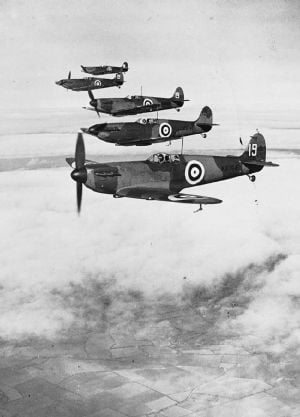
The Second World War was a worldwide military conflict which lasted from 1939 to 1945. It was the amalgamation of two conflicts, one beginning in Asia, in 1937, as the Second Sino-Japanese War and the other beginning in Europe, in 1939, with the invasion of Poland. It is regarded as the historical successor to World War I. The majority of the world's nations split into two opposing camps: The Allies and the Axis. England fought with its Commonwealth allies including Canada, Australia, New Zealand, South Africa, and India, later to be joined by further allies. Spanning much of the globe, World War II resulted in the deaths of over 60 million people, making it the deadliest conflict in human history. The conflict ended in an Allied victory.
Wartime leader Winston Churchill and his successor Clement Atlee helped plan the post-war world as part of the "Big Three." World War II, however, left England financially and physically damaged. Loans taken out during and after World War II from the United States and from Canada were economically costly, but, along with post-war U.S. Marshall aid, they started England on the road to recovery. As a result, the United States and Soviet Union emerged as the world's two leading superpowers, setting the stage for the Cold War for the next 45 years. Independence movements arose in Asia and Africa, while Europe itself began traveling the road leading to integration. During the five decades following World War II, most of the territories of the Empire became independent. Many went on to join the Commonwealth of Nations, a free association of independent states.
Multi-ethnic welfare state
The immediate post-war years brought the establishment of the British Welfare State and one of the world's first and most comprehensive health services, while the demands of a recovering economy brought people from all over the Commonwealth to create a multi-ethnic England. Although the new postwar limits of Britain's political role were confirmed by the Suez Crisis of 1956, the international currency of the language meant the continuing impact of its literature and culture, while at the same time from the 1960s its popular culture found an influence abroad.
Following a period of economic stagnation and industrial strife in the 1970s after a global economic downturn, the 1980s saw the inflow of substantial North Sea oil revenues, and the premiership of Margaret Thatcher, under whom there was a marked break with the post-war political and economic consensus. Her supporters credit her with economic success, but her critics blame her for greater social division. From the mid-1990s onward these trends largely continued under the leadership of Tony Blair.
The United Kingdom was a member of the European Union from 1973 until January 31, 2020.
Government and politics
There has not been a Government of England since 1707, when the Kingdom of England merged with the Kingdom of Scotland to form the Kingdom of Great Britain, although both kingdoms have been ruled by a single monarch since 1603. Prior to the Acts of Union of 1707, England was ruled by a monarch and the Parliament of England.
The Scottish and Welsh governing institutions were created by the UK parliament with support from the majority of people of Scotland and Wales in referenda in 1997, and are not independent of the rest of Britain. However, this gave each country a separate and distinct political identity, leaving England (with 83 percent of the UK population) as the only part of Britain directly ruled in nearly all matters by the British government in London. In Cornwall, a region of England claiming a distinct national identity, there has been a campaign for a Cornish assembly along Welsh lines by nationalist parties such as Mebyon Kernow.
Because Westminster is the UK parliament but also votes on local English matters (England has no parliament of its own) devolution of national matters to parliament/assemblies in Scotland, Wales and Northern Ireland has refocused attention on a long-standing anomaly called the West Lothian question. Before Scottish devolution, purely-Scottish matters were debated at Westminster, but subject to a convention that only Scottish MPs could vote on them. The "question" was that there was no "reverse" convention: Scottish MPs could and did vote on issues relating only to England and Wales.
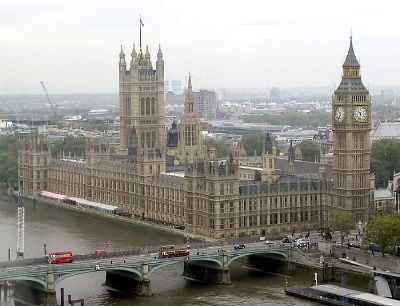
Welsh devolution has removed the anomaly for Wales, but highlighted the anomaly for England: Scottish and Welsh MPs can vote on English issues, but purely Scottish and Welsh issues are debated in Scotland and Wales, not at Westminster. This problem is exacerbated by an over-representation of Scottish MPs in the government,sometimes referred to as the Scottish mafia; as of September 2006, seven of the 23 cabinet members were Scottish. In addition, Scotland traditionally benefited from moderate malapportionment in its favor, increasing its representation to a degree disproportionate to its population; only recently has the Boundary Commission turned its attention to this issue and not until the 2007 redrawing of boundaries has Scotland's representation been in line with the rest of the UK.
In terms of national administration, England's affairs are managed by a combination of the UK government, the UK parliament, a number of England-specific quangos, such as English Heritage, and the mostly unelected regional assemblies (a kind of nascent executive for each English region).
There are calls for a devolved English Parliament, and some English people and parties go further by calling for the dissolution of the union entirely. However, the approach favored by the Labour government was (on the basis that England is too large to be governed as a single sub-state entity) to propose the devolution of power to the regions of England. Lord Falconer claimed a devolved English parliament would dwarf the rest of the United Kingdom. Referenda would decide whether people wanted to vote for directly-elected regional assemblies to watch over the work of the non-elected regional development agencies.
Subdivisions
Historically, the highest level of local government in England was the county. These divisions had emerged from a range of units of old, pre-unification England (such as the kingdoms of Sussex and Kent) and further medieval reorganizations (sometimes using duchies such as Lancashire and Cornwall). These historical county lines were usually drawn up before the Industrial Revolution and the mass urbanization of England. The counties each had a county town and many county names were drawn from these (for example Nottinghamshire, from Nottingham).
A series of local government reorganizations took place since the latter part of the nineteenth century. The solution to the emergence of large urban areas was the creation of large metropolitan counties centered on cities (an example being Greater Manchester). The creation of unitary authorities, where districts gained the administrative status of a county, began with the 1990s reform of local government. Some confusion persists between the ceremonial counties (which do not necessarily form an administrative unit) and the metropolitan and non-metropolitan counties.
Non-metropolitan counties (or "shire counties") are divided into one or more districts. At the very lowest level, England is divided into parishes, though these are not to be found everywhere (many urban areas for example are unparished). Parishes are prohibited from existing in Greater London.
England was also divided into nine regions, which do not have an elected authority and exist to co-ordinate certain local government functions across a wider area. Greater London is an exception, however, and is the one region which now has a representative authority as well as a directly elected mayor. The 32 London boroughs and the Corporation of London remain the local form of government in the city.
Economics

England's economy is the second largest economy in Europe and the fifth largest economy in the world. It follows the Anglo-Saxon economic model. England's economy is the largest of the four economies of the United Kingdom, with 100 of Europe's 500 largest corporations based in London. As part of the United Kingdom, England is a major center of world economics. One of the world's most highly industrialized countries, England is a leader in the chemical and pharmaceutical sectors and in key technical industries, particularly aerospace, the arms industry and the manufacturing side of the software industry. London exports mainly manufactured goods and imports materials such as petroleum, tea, wool, raw sugar, timber, butter, metals, and meat, with France, Italy, Greece, the Netherlands, Belgium, and Spain being the biggest importers of beef from England.
The central bank of the United Kingdom, which sets interest rates and implements monetary policy, is the Bank of England in London. London is also home to the London Stock Exchange, the main stock exchange in the UK and the largest in Europe. London, is one of the international leaders in finance and the largest financial center in Europe.
Traditional heavy and manufacturing industries declined sharply in England in the late twentieth century, as they have in the United Kingdom as a whole. At the same time, service industries have grown in importance. For example, tourism rose to be the sixth largest industry in the UK. The largest center for tourism is London, which attracts millions of international tourists every year. As part of the United Kingdom, England's official currency is the pound sterling (also known as the British pound or GBP).
Transport
BAA Limited runs many of England's airports, its flagship being London Heathrow Airport, the largest airport by traffic volume in Europe and one of the world's busiest airports, and London Gatwick Airport, the second largest. The third largest is Manchester Airport. This is run by Manchester Airport Group, which also owns various other airports. Other major airports include London Stansted Airport in Essex, about 30 miles (50 km) north of London and Birmingham International Airport.
The growth in private car ownership in the latter half of the twentieth century led to a number of road-building programmes. Important trunk roads built include the A1 Great North Road from London to Newcastle and Edinburgh, and the A580 "East Lancs." road between Liverpool and Manchester. The Preston Bypass was the first section of motorway and opened in 1958—it now forms part of the M6 motorway, the country's longest motorway running from Rugby through North West England to the Scottish border.
The National Rail network consists of 10,072 route miles (16,116 route km) in Great Britain, of which the majority is in England. Urban rail networks are also well developed in London and several other cities, including the Manchester Metrolink and the London Underground, the oldest and most extensive underground railway in the world, and consisting of 253 miles (407 kilometers) of line and serves 275 stations.
There are around 4400 miles of navigable waterways in England, of which roughly half is owned by British Waterways. It is estimated that 165 million journeys are made by people on Britain's waterways annually. The Thames is the major waterway in England, with imports and exports focused at Tilbury, one of the three major ports in the UK.
Demographics
With around 55 million inhabitants, England is the most populous nation in the United Kingdom, as well as being the most ethnically diverse. England would have the fourth largest population in the European Union and would be the 25th largest country by population if it were a sovereign state.
The country's population is "aging," with a declining percentage of the population under age 16 and a rising one of over 65. England is one of the most densely populated countries in Europe, with 992 people per square mile (383 people per square kilometer) making it second only to the Netherlands.
The economic prosperity of England has made it a destination for economic migrants from Scotland, Wales, Northern Ireland and the Republic of Ireland. This was particularly true during the Industrial Revolution. Since the fall of the British Empire, numerous people from former colonies have migrated to Britain including the Indian sub-continent and the British Caribbean.
The continuous increase in population resulted from net immigration, from a rising birth rate, and increasing life expectancy.
Ethnicity
The generally accepted view is that the ethnic background of the English populace, before nineteenth- and twentieth-century immigration, was a mixed European one deriving from historical waves of Celtic, Roman, Anglo-Saxon, Norse, and Norman invasions, along with the possible survival of pre-Celtic ancestry. The nineteenth and twentieth centuries, furthermore, brought much new immigration to England.
In some English cities the percentage of "minority groups" is large but is still less than half.
Ethnicity aside, the simplest view is that an English person is someone who was born in England and holds British nationality, regardless of his or her racial origin. The English frequently include themselves and their neighbors in the wider term of "British," while the Scots and Welsh tend to be more forward about referring to themselves by one of those more specific terms. This reflects a more subtle form of English-specific patriotism in England; St George's Day, the country's national day, is barely celebrated, though celebrations have increased. Modern celebration of English identity is often found around its sports, one field in which the British Home Nations often compete individually—in football (soccer), rugby union, and cricket.
Religion
Unlike many countries, which are officially secular, the UK is an officially Christian country. This is reflected throughout British public life. The Church of England is the officially established Christian church in England, and acts as the "mother" and senior branch of the worldwide Anglican Communion. Originally established as part of the Roman Catholic Church in 597 by Augustine of Canterbury on behalf of Pope Gregory I, the Church split from Rome in 1534 during the reign of Henry VIII of England. Some Church of England bishops sit in the House of Lords. The British monarch is required to be a member of the Church of England under the Act of Settlement 1701 and is the Supreme Governor. Roman Catholics are expressly forbidden from becoming monarch, stemming from conflict over the crown and whether Britain was in the past, Catholic or Protestant. The Church of England is based at Canterbury Cathedral and the Archbishop of Canterbury is the senior clergyman.
Other major Christian Protestant denominations in England include the Methodist Church, the Baptist Church and the United Reformed Church. Smaller denominations include the Religious Society of Friends (the "Quakers") and the Salvation Army—both founded in England. There are also Afro-Caribbean Churches, especially in the London area. The Roman Catholic Church re-established a hierarchy in England in the nineteenth century. Attendances were considerably boosted by immigration, especially from Ireland and more recently Poland.
However, immigration has brought an enormous diversity of religious belief in England, levels of church attendance has declined, and there is a growing percentage that have no religious affiliation.
Language
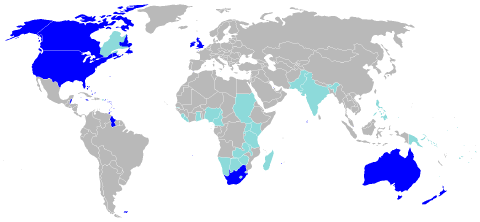
The English language, which is spoken by hundreds of millions of people around the world, originated as the language of England, where it remains the principal tongue, although not officially designated as such. An Indo-European language in the Anglo-Frisian branch of the Germanic family, it is closely related to Scots and Frisian. As the Anglo-Saxon kingdoms merged into England, "Old English" emerged; some of its literature and poetry has survived.
Used by aristocracy and commoners alike before the Norman Conquest (1066), English was displaced in cultured contexts under the new regime by the Norman French language of the new Anglo-Norman aristocracy. Its use was confined primarily to the lower social classes while official business was conducted in a mixture of Latin and French. Over the following centuries, however, English gradually came back into fashion among all classes and for all official business except certain traditional ceremonies, some of which survive to this day. But Middle English, as it had by now become, showed many signs of French influence, both in vocabulary and spelling. During the Renaissance, many words were coined from Latin and Greek origins; and in more recent years, Modern English has extended this custom, being always remarkable for its far-flung willingness to incorporate foreign-influenced words.
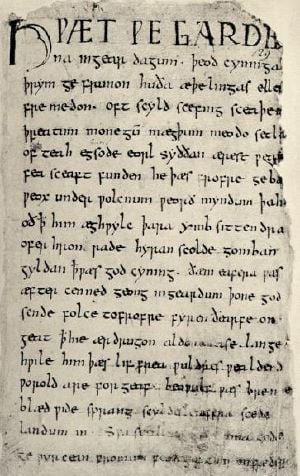
It is most commonly accepted that—thanks in large part to the British Empire, and now the United States—the English language became the world's unofficial lingua franca, while English common law is also the foundation of many legal systems throughout the English-speaking countries of the world. English language learning and teaching is an important economic sector, including language schools, tourism spending, and publishing houses.
UK legislation does not recognize any language as being official, but English is the only language used in England for general official business.
The only non-Anglic native spoken language in England is the Cornish language, a Celtic language spoken in Cornwall, which became extinct in the nineteenth century but has been revived and is spoken in various degrees of fluency, currently by around 2000 people. Languages spoken within ethnic minority communities include Hindi, Bengali, Tamil, Punjabi, Urdu, Polish, Greek, Turkish, and Cantonese, as well as Romany.
Despite the relatively small size of the nation, there are a many distinct English regional accents. Those with particularly strong accents may not be easily understood elsewhere in the country. Use of foreign non-standard varieties of English (such as Caribbean English) is also increasingly widespread, mainly because of the effects of immigration.
Men and women
About half of British women work, and of these, half are part-time workers. The ideal of gender equality is widely shared, but inequality is evident in access to occupations by women and men, pay levels for similar kinds of work, and in the allocation of domestic tasks.
Marriage and the family
Historically most people in England lived either in conjugal extended families or nuclear families. This reflected an economic landscape where most people tended to have less spending power, meaning that it was more practical to stick together rather than go their individual ways. This pattern also reflected gender roles. Men were expected to go out to work and women were expected to stay at home and look after the families.
In the twentieth century, the emancipation of women, the greater freedoms enjoyed by both men and women in the years following the Second World War, greater affluence and easier divorce have changed gender roles and living arrangements significantly. The trend is a rise in single people living alone, the virtual extinction of the extended family (outside certain ethnic minority communities), and the nuclear family reducing in prominence.
From the 1990s, the break-up of the traditional family unit, when combined with a low interest rate environment and other demographic changes, has created great pressure on the housing market, in particular regarding the accommodation of key workers such as nurses, other emergency service workers and teachers, who are priced out of most housing, especially in South East England.
Some research indicates that in the twenty-first century, young people tend to live in the parental home for much longer than their predecessors. The high cost of living, combined with rising cost of accommodation, further education and higher education means that many young people cannot afford to live independent lives from their families.
Premarital sex and unmarried cohabitation are widely accepted. However, single motherhood caused by unstable cohabiting relationships, or marital breakdown, or as a means of obtaining welfare, is seen as a big problem because of its drain on the welfare budget, and subsequent problems of child abuse, and juvenile delinquency, rather than as a moral question.
Education
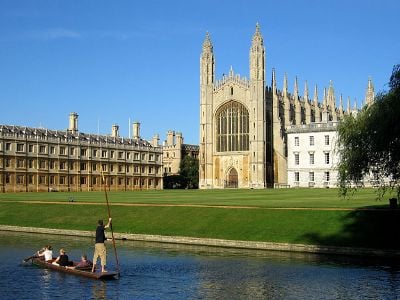
England is home to the oldest existing schools in the English speaking world: The King's School, Canterbury and The King's School, Rochester, believed to be founded in the sixth and seventh century respectively. There are at least eight existing schools in England which were founded in the first millennium. Most of these ancient institutions are fee-paying schools, although there are early examples of state schools in England, most notably Beverley Grammar School founded in 700. State and private schools and colleges have continued side by side since that time. Other famous English schools include Eton College (founded 1440), Harrow School (1572)Winchester College (1382), Tonbridge School (1553) and Charterhouse School (1611). The oldest surviving girls' school in England is Red Maids' School, founded in 1634.
England is home to the two oldest universities in the English speaking world: Oxford University (twelfth century) and Cambridge University (early thirteenth century). There are more than ninety universities in England and many of these (most notably the universities of Oxford, Cambridge and London) consist of autonomous colleges many of which are world famous in their own right, for example University College, Oxford (founded 1249), Peterhouse, Cambridge (1284) and the London School of Economics (1895).
England's high literacy rate of 99 percent is attributable to universal public education introduced for the primary level in 1870 and secondary level in 1900. The education is split into two main types; State schools which are funded through taxation and free to all, and private schools, which provide a paid-for education on top of taxes (also known as "Public" or "Independent" schools).
Most English (but not independent) schools usher students through nursery school, one of two primary school tracks, and one of two secondary tracks, of which sixth form is optional. About one-fifth of British students go on to post-secondary education (18+).
Education follows the national curriculum, which was introduced in 1988, which includes the core subjects English, mathematics, and science and the foundation subjects: Design and technology, [[information and communication technology], history, geography, modern foreign languages (MFL), music, art and design, and the subjects of the basic curriculum, physical education, citizenship education, plus compulsory religious education (RE) which has a unique place in British law.
Class
Traditionally, British society has been stratified into three classes, with the highest occupied by the aristocratic inheritors of old, landed wealth. Those in the working class typically grew up in a family supported by wages earned in industrial or agricultural labor, where neither parent had university education, and the family home was rented. The working class supports the trade union movement and the Labor Party. A middle-class person has parents with white-collar jobs, who are likely to have higher education, own their suburban house, and who see education as the key to advancement. They tend to support the Conservative Party, which stresses self-sufficiency and individualism. However, de-industrialization, increased social mobility, and the emergence of the knowledge economy have re-defined notions of class, so that numerous educated middle class people vote for the Labor Party.
Culture
Many of the most important figures in the history of modern western scientific and philosophical thought were either born in, or at one time or other resided in, England. Major English thinkers of international significance include scientists such as Sir Isaac Newton, Francis Bacon, Charles Darwin and New Zealand-born Ernest Rutherford, philosophers such as John Locke, John Stuart Mill, Bertrand Russell and Thomas Hobbes, and economists such as David Ricardo and John Maynard Keynes. Karl Marx wrote most of his important works, including Das Kapital, while in exile in London, and the team that developed the first atomic bomb began their work in the England, under the wartime codename tube alloys.
Architecture
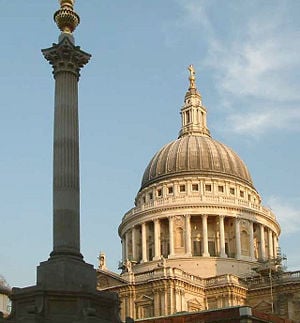
The earliest remnants of architecture in the United Kingdom are mainly Neolithic monuments such as Stonehenge and Avebury, and Roman ruins such as the spa in Bath. Many castles remain from the medieval period and in most towns and villages the parish church is an indication of the age of the settlement, built as they were from stone rather than the traditional wattle and daub.
Over the two centuries following the Norman conquest of 1066, and the building of the Tower of London], many great castles such as Caernarfon Castle in Wales and Carrickfergus Castle in Ireland were built to suppress the natives. Windsor Castle is the largest inhabited castle in the world and the oldest in continuous occupation. Large houses continued to be fortified until the Tudor period, when the first of the large gracious unfortified mansions such as the Elizabethan Montacute House and Hatfield House were built.
The English Civil War (1642—1649) proved to be the last time in British history that houses had to survive a siege. Corfe Castle was destroyed following an attack by Oliver Cromwell's army, but Compton Wynyates survived a similar ordeal. Inigo Jones, from just before the Civil War, and who is regarded as the first significant British architect, was responsible for importing Palladian architecture to Britain from Italy. The Queen's House at Greenwich is perhaps his best surviving work.
Following the Great Fire of London in 1666, one of the best-known British architects, Sir Christopher Wren, was employed to design and rebuild many of the ruined ancient churches of London, although his master plan for rebuilding London as a whole was rejected. It was in this period that he designed the building that he is perhaps best known for, St Paul's Cathedral.
In the early eighteenth century baroque architecture—popular in Europe—was introduced, and Blenheim Palace was built. However, baroque was quickly replaced by a return of the Palladian form. The Georgian architecture of the eighteenth century was an evolved form of Palladianism. Many existing buildings such as Woburn Abbey and Kedleston Hall are in this style. Among the many architects of this form of architecture and its successors, neoclassicism and Romanticism, were Robert Adam, Sir William Chambers, and James Wyatt.
In the early nineteenth century the romantic medieval gothic style appeared as a backlash to the symmetry of Palladianism, and such buildings as Fonthill Abbey were built. By the middle of the nineteenth century, as a result of new technology, construction incorporated steel. One of the greatest exponents of this was Joseph Paxton, architect of the Crystal Palace. Paxton also continued to build such houses as Mentmore Towers, in the still popular retrospective English Renaissance styles. In this era of prosperity and development British architecture embraced many new methods of construction, but ironically in style, such architects as August Pugin ensured it remained firmly in the past.
At the beginning of the twentieth century a new form of design—arts and crafts—became popular. The architectural form of this style, which had evolved from the nineteenth century designs of such architects as George Devey, was championed by Edwin Lutyens. Arts and crafts in architecture is symbolized by an informal, non-symmetrical form, often with mullioned or lattice windows, multiple gables and tall chimneys. This style continued to evolve until World War II.
Following the Second World War, reconstruction went through a variety of phases, but was heavily influenced by Modernism, especially from the late 1950s to the early 1970s. Many bleak town center redevelopments—criticized for featuring hostile, concrete-lined "windswept plazas"—were the fruit of this interest, as were many equally bleak public buildings, such as the Hayward Gallery. Many Modernist-inspired town centers are today in the process of being redeveloped.
In the immediate post-war years, perhaps hundreds of thousands of council houses in vernacular style were built, giving working class people their first experience of private gardens and indoor sanitation.
Modernism remains a significant force in English architecture, although its influence is felt predominantly in commercial buildings. The two most prominent proponents are Lord Rogers of Riverside, who created Rogers' the iconic London Lloyd's Building and the Millennium Dome, and Lord Foster of Thames Bank, who created the Swiss Re Buildings (aka The Gherkin) and the City Hall (London).
Since England has one of the highest population densities in Europe, housing tends to be smaller and more closely packed, particularly compared to North America. The British have a particular affinity with the terraced house, dating back to the aftermath of the Great Fire of London. The majority of surviving housing built before 1914 is of this type, and consequently it dominates inner residential areas. In the twentieth century the process of suburbanization led to a spread of semi-detached and detached housing. In the aftermath of the Second World War, public housing was dramatically expanded to create a large number of council estates, although most units in these have since been bought by their tenants.
Art
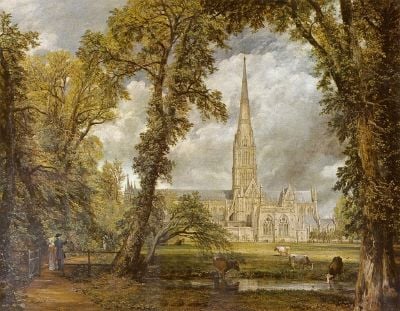
The oldest art in the United Kingdom can be dated to the Neolithic period, and is found in a funerary context. But it is in the Bronze age that the first innovative artworks are found. The Beaker people, who arrived in Britain around 2500 B.C.E., were skilled in metal refining, working at first in copper, but later bronze and gold. The Wessex culture excelled in making gold ornaments. Works of art placed in graves or sacrificial pits have survived.
In the Iron Age, the Celts made gold ornaments, but stone and most likely wood was also used. This style continued into the Roman period, and would find a renaissance in the Medieval period. It also survived in the Celtic areas not occupied by the Romans, largely corresponding to the present-day Wales and Scotland.
The Romans brought with them the classical style, glasswork, and mosaics. Christian art from the fourth century, has been preserved in mosaics with Christian symbols and pictures. Celtic and Scandinavian art have in common the use of intricate, intertwined patterns of decoration.
Anglo-Saxon sculpting was outstanding for its time in the eleventh century, as proved by pre-Norman ivory carvings. Celtic high crosses show the use of Celtic patterns in Christian art. Scenes from the Bible were depicted, framed with the ancient patterns. Some ancient symbols were redefined. Murals were painted on the white-chalked walls of stone churches, and stained glass was used in church and other windows.
As a reaction to abstract expressionism, pop art emerged originally in England at the end of the 1950s.
Significant figures in English art include William Blake, William Hogarth, J.M.W. Turner and John Constable in the eighteenth and early nineteenth centuries. Twentieth century artists included Francis Bacon, David Hockney, Bridget Riley, and the pop artists Richard Hamilton and Peter Blake. New York-born Sir Jacob Epstein was a pioneer of modern sculpture. More recently, the so-called Young British Artists have gained some notoriety, particularly Damien Hirst and Tracey Emin. Notable illustrators include Aubrey Beardsley, Roger Hargreaves, and Beatrix Potter.
England is home to the National Gallery, Tate Britain, Tate Liverpool, Tate St. Ives, and the Tate Modern.
Cinema
England has been influential in the technological, commercial, and artistic development of cinema and probably second only to the USA in producing the greatest quantity of world-wide film stars. Despite a history of successful productions, the industry is characterized by an ongoing debate about its identity (including economic and cultural issues) and the influences of American and European cinema, although it is fair to say a brief "golden age" was enjoyed in the 1940s from the studios of J. Arthur Rank and Korda.
Modern cinema is generally regarded as descending from the work of the French Lumière brothers in 1892, and their show first came to London in 1896. However, the first moving pictures developed on celluloid film were made in Hyde Park, London in 1889 by William Friese Greene, a British inventor, who patented the process in 1890. The film is the first known instance of a projected moving image. The first people to build and run a working 35 mm camera in Britain were Robert W. Paul and Birt Acres. They made the first British film Incident at Clovelly Cottage in February 1895, shortly before falling out over the camera's patent.
Clothing
There is no specifically British national costume. In England, certain military uniforms such as the Beefeater or the King's Guard are considered to be symbolic of Englishness, though they are not official national costumes. Morris dancers or the costumes for the traditional English May dance are cited by some as examples of traditional English costume.
This is in large part due to the critical role that British sensibilities have played in world clothing since the eighteenth century. Particularly during the Victorian era, British fashions defined acceptable dress for men of business. Key figures such as Beau Brummell, the future Edward VII and Edward VIII created the modern suit and cemented its dominance. As such, it could be argued that the national costume of the British male is a three-piece suit, necktie and bowler hat - an image regularly used by cartoonists as a caricature of Britishness.
Cuisine
Although highly-regarded in the Middle Ages, English cuisine later became a source of fun among Britain's French and European neighbours, being viewed until the late twentieth century as crude and unsophisticated by comparison with continental tastes. However, with the influx of non-European immigrants (particularly those of south and east Asian origins) from the 1950s onwards, the English diet was transformed. Indian and Chinese cuisine in particular were absorbed into English culinary life. Restaurants and takeaways appeared in almost every town in England, and "going for an Indian" became a regular part of English social life. A distinct hybrid food style composed of dishes of Asian origin, but adapted to British tastes, emerged and was subsequently exported to other parts of the world. Many of the well-known Indian dishes, such as Tikka Masala and Balti, are in fact Anglo-Indian dishes of this sort. Chicken Tikka Masala is often jokingly referred to as England's national dish, in a reference both to its English origins and to its enormous popularity.
Dishes forming part of the old tradition of English food include: Apple pie, bangers and mash, bubble and squeak, cornish pasty, cottage pie, egg salad, fish and chips, full English breakfast, gravy, jellied eels, Lancashire hotpot, Lincolnshire sausage, mince pies, pie and mash, pork pie, shepherd's pie, spotted Dick, steak and kidney pie, Sunday roast, toad in the hole, and Yorkshire pudding.
Engineering and innovation
As birthplace of the Industrial Revolution, England was home to many significant inventors during the late eighteenth and early nineteenth century. Famous English engineers include Isambard Kingdom Brunel, best known for the creation of the Great Western Railway, a series of famous steamships, and numerous important bridges.
Other notable English figures in the fields of engineering and innovation include: Richard Arkwright, industrial spinning machine inventor; Charles Babbage, computer inventor (nineteenth century); Tim Berners-Lee, inventor of the World Wide Web, http, html, and many of the other technologies on which the Web is based; James Blundell, a physician who performed the first blood transfusion; Hubert Cecil Booth, vacuum cleaner inventor; Edwin Beard Budding, lawnmower inventor; George Cayley, seat belt inventor; Christopher Cockerell, hovercraft inventor; John Dalton, pioneer of atomic theory; James Dyson, dual cyclone bagless vacuum cleaner inventor; Thomas Fowler, thermosiphon inventor; Robert Hooke, who proposed Hooke's law of elasticity; E. Purnell Hooley, Tarmacadam inventor; Isaac Newton, who defined universal gravitation, Newtonian mechanics, infinitesimal calculus; Stephen Perry, rubber band inventor; Percy Shaw, "cat's eye" road safety device inventor; George and Robert Stephenson, (father and son) railway pioneers; Joseph Swan light bulb developer; Richard Trevithick, builder of the earliest steam locomotive; Alan Turing and Tommy Flowers, inventors of the modern computer and its associated concepts and technologies; Frank Whittle jet engine inventor; and Joseph Whitworth, inventor of numerous modern techniques and technologies of precision engineering.
Folklore
Many of the England's oldest legends share themes and sources with the Celtic folklore of Wales, Scotland and Ireland, a typical example being the legend of Herne the Hunter, which shares many similarities with the traditional Welsh legend of Gwyn ap Nudd. Successive waves of pre-Norman invaders and settlers, from the Romans onwards, via Saxons, Jutes, Angles, Norse, to the Norman Conquest, have all influenced the myths and legends of England. Some tales, such as that of The Lambton Wyrm show a distinct Norse influence, while others, particularly some of the events and characters associated with the Arthurian legends show a distinct Romano-gaulic slant.
The most famous body of English folk-tales concerns the legends of King Arthur, although it would be wrong to regard these stories as purely English in origin as they also concern Wales and, to a lesser extent, Ireland and Scotland. They should therefore be considered as part of the folklore of the British Isles as a whole. Post-Norman stories include the tales of Robin Hood, which exist in many forms, and stories of other folk heroes such as Hereward The Wake, and Dunn of Cumbria who, although being based on historical characters, have grown to become legends in their own right. There are historical figures (such as Sir Francis Drake and "Drake's Drum") who have legends associated with them.
Literature
England has produced a wealth of significant literary figures. Early English writers includeThomas Malory and Geoffrey of Monmouth. These romantic writers were followed by a wave of more realistic writers, including Daniel Defoe, Henry Fielding, William Makepeace Thackeray, Jane Austen (often credited with inventing the modern novel), Charles Dickens, the Brontë sisters, Thomas Hardy, Joseph Conrad, Sir Arthur Conan Doyle, Mary Shelley, George Eliot, Rudyard Kipling, E.M. Forster, and H. G. Wells. In the twentieth century, Virginia Woolf, D. H. Lawrence, J. R. R. Tolkien, George Orwell, Graham Greene, Agatha Christie, Enid Blyton, and Ian McEwan all excelled. Tolkien became one of the most popular writers of the modern world, returning to a Romantic view of fiction. Children's author J. K. Rowling has had huge success.
Important poets include Geoffrey Chaucer, Edmund Spenser, Sir Philip Sydney, Thomas Kyd, John Donne, Andrew Marvell, John Milton, Alexander Pope, William Wordsworth, Lord Byron, John Keats, William Blake, Alfred Lord Tennyson, Samuel Taylor Coleridge, T.S. Eliot (an English Citizen from 1927), [Wilfred Owen]], John Betjeman, Philip Larkin, W. H. Auden, and Ted Hughes.
Media
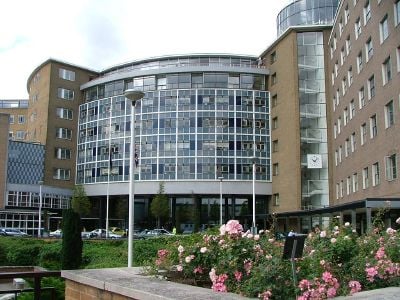
England has an unrivaled number of media outlets, and the prominence of the English language gives it a widespread international dimension. The BBC is England's publicly-funded radio and television broadcasting corporation, and is the oldest broadcaster in the world. Funded by a compulsory television license, the BBC operates several television networks and BBC Radio stations both in England and abroad. The BBC's international television news service, BBC World, is broadcast throughout the world and the BBC World Service radio network is broadcast in 33 languages globally. Most digital cable television services are provided by NTL: Telewest, and free-to-air digital terrestrial television by Freeview.
British newspapers are either quality, serious-minded newspaper (usually referred to as "broadsheets" due to their large size) and the more populist, tabloid varieties. For convenience of reading, many traditional broadsheets have switched to a more compact format, traditionally used by tabloids. The Sun has the highest circulation of any daily newspaper in the UK, with approximately a quarter of the market; its sister paper, The News of The World similarly leads the Sunday newspaper market, and traditionally focuses on celebrity-led stories. The Daily Telegraph, a right-of-center broadsheet paper, has overtaken The Times (tabloid size format) as the highest-selling of the "quality" newspapers. The Guardian is a more liberal (left-wing) "quality" broadsheet. The Financial Times is the main business paper, printed on distinctive salmon-pink broadsheet paper. A number of British magazines and journals have achieved world-wide circulation including The Economist and Nature.
Music
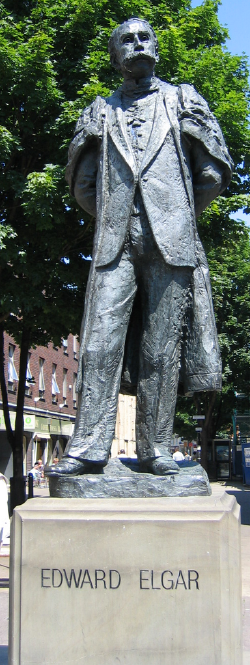
Composers from England have not achieved recognition as broad as that earned by their literary counterparts, and particularly during the nineteenth century, were overshadowed in international reputation by other European composers; however, many works of earlier composers such as Thomas Tallis, William Byrd, and Henry Purcell are still frequently performed throughout the world today. A revival of England's musical status began during the twentieth century with the prominence of composers such as Edward Elgar, Gustav Holst, William Walton, Eric Coates, Ralph Vaughan Williams, Frederick Delius, and Benjamin Britten.
In popular music, however, English bands and solo artists have been cited as the most influential and best-selling musicians of all time. Acts such as The Beatles, The Who, The Rolling Stones, Pink Floyd, Deep Purple, The Smiths, Led Zeppelin, The Clash, Black Sabbath, The Cure, Iron Maiden, David Bowie, Queen, Spice Girls, Oasis, The Police, Robbie Williams, Sir Elton John and Radiohead,are among the biggest selling in the world. England is also credited with being the birthplace of many pop-culture movements such as hard rock, British invasion, heavy metal, britpop, glam rock, drum and bass, grindcore, progressive rock, indie, punk, goth, shoegazing, acid house, and UK garage.
Science and philosophy
Prominent English figures from the field of science and mathematics include Sir Isaac Newton, Michael Faraday, J. J. Thomson, Charles Babbage, Charles Darwin, Stephen Hawking, Christopher Wren, Alan Turing, Francis Crick, Joseph Lister, Tim Berners-Lee, Andrew Wiles, and Richard Dawkins. England played an important role in the development of Western philosophy, particularly during the Enlightenment. Jeremy Bentham, leader of the Philosophical Radicals, and his school are recognized as the men who unknowingly laid down the doctrines for Socialism. Bentham's impact on English law is also considerable. Aside from Bentham, major English philosophers include Francis Bacon, Thomas Hobbes, John Locke, Thomas Paine, John Stuart Mill, Bernard Williams, Bertrand Russell, and A.J. Ayer.
Theatre
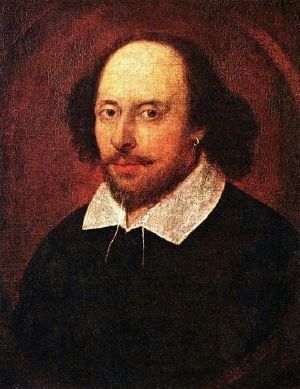
Theatre was introduced to England from Europe by the Romans who built auditoriums across the country. By the medieval period theatre had developed with the mummers' plays, a form of early street theatre associated with the Morris dance, concentrating on themes such as Saint George and the Dragon, and Robin Hood. These were folk tales re-telling old stories, and the actors traveled from town to town performing for their audiences in return for money and hospitality. The medieval mystery plays and morality plays, which dealt with Christian themes, were performed at religious festivals.
The reign of Elizabeth I in the late sixteenth century and early seventeenth century saw a flowering of drama. Perhaps the most famous playwright in the world, William Shakespeare, wrote around 40 plays that are still performed in theaters across the world to this day. They include tragedies, such as Hamlet (1603), Othello (1604), and King Lear (1605); comedies, such as A Midsummer Night's Dream (1594—1596) and Twelfth Night (1602); and history plays, such as Henry IV, part 1—2. The Elizabethan age is sometimes nicknamed "the age of Shakespeare" for the amount of influence he held over the era. Other important Elizabethan and seventeenth-century playwrights include Ben Jonson, Christopher Marlowe, and John Webster.
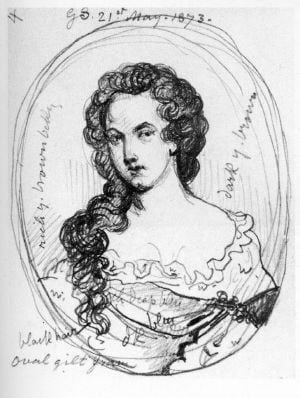
During the Interregnum (1642—1660), English theaters were kept closed by the Puritans for religious and ideological reasons. When the London theaters opened again with the Restoration of the monarchy in 1660, they flourished under the personal interest and support of Charles II. Wide and socially mixed audiences were attracted by topical writing and by the introduction of the first professional actresses (in Shakespeare's time, all female roles had been played by boys). New genres of the Restoration were heroic drama, pathetic drama, and Restoration comedy. The Restoration plays that have best retained the interest of producers and audiences today are the comedies, such as William Wycherley's The Country Wife (1676), The Rover (1677) by the first professional woman playwright, Aphra Behn, John Vanbrugh's The Relapse (1696), and William Congreve's The Way of the World (1700). Restoration comedy is famous or notorious for its sexual explicitness, a quality encouraged by Charles II (1660–1685) personally and by the rakish aristocratic ethos of his court.
In the eighteenth century, the highbrow and provocative Restoration comedy lost favor, to be replaced by sentimental comedy, domestic tragedy such as George Lillo's The London Merchant (1731), and by an overwhelming interest in Italian opera. Popular entertainment became more important in this period than ever before, with fair-booth burlesque and mixed forms that are the ancestors of the English music hall. These forms flourished at the expense of legitimate English drama, which went into a long period of decline. By the early nineteenth century it was no longer represented by stage plays at all, but by the closet drama, plays written to be privately read in a "closet" (a small domestic room).
A change came in the late nineteenth century with the plays on the London stage by the Irishmen George Bernard Shaw and Oscar Wilde and the Norwegian Henrik Ibsen, all of whom influenced domestic English drama and revitalised it.
The West End of London has a large number of theaters, particularly centered around Shaftesbury Avenue. A prolific composer of the twentieth century, Andrew Lloyd Webber, has dominated the West End for a number of years and his musicals have travelled to Broadway in New York and around the world, as well as being turned into films.
Sport
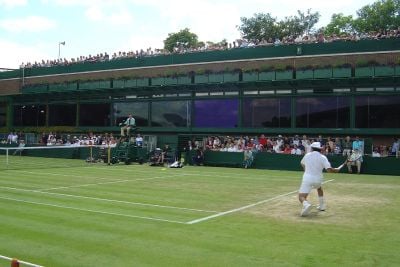
A number of modern sports were codified in England during the nineteenth century, among them cricket, rugby union and rugby league, football, tennis, and badminton. Of these, association football, rugby and cricket remain the country's most popular spectator sports. England contains more UEFA five-star and four-star rated stadia than any other country, and is home to some of the sport's top football clubs. The England national football team are considered one of the game's superpowers, having won the World Cup in 1966 when it was hosted in England. Since then, however, they have failed to reach a final of a major international tournament, though they reached the semi-finals of the World Cup in 1990 and the quarter-finals in 2002 and 2006 and Euro 2004.
The England national rugby union team and England cricket team are often among the best performing in the world, with the rugby union team winning the 2003 Rugby World Cup, and the cricket team winning The Ashes in 2005, and being ranked the second best Test Cricket nation in the world. Rugby union clubs such as Leicester Tigers, London Wasps and the Northampton Saints have had success in the Europe-wide Heineken Cup. At rugby league, the England national rugby league team competed more regularly after 2006, when England became a full test nation in lieu of the Great Britain national rugby league team, when that team retired.
Thoroughbred racing originated under Charles II of England as the "Sport of Kings" and is a royal pastime to this day. World-famous horse races include the Grand National and the Epsom Derby.
Many teams and drivers in Formula One and the World Rally Championship are based in the England. The country also hosts legs of the Formula One and World Rallying Championship calendars and has its own Touring Car Racing championship, the BTCC. British Formula One world champions include Mike Hawthorn, Graham Hill (twice), Jim Clark (twice), John Surtees (who was also successful on motorcycles), Jackie Stewart (three times), James Hunt, Nigel Mansell, and Graham Hill's son, Damon Hill. British drivers have not been as successful in the World Rally championship, with only Colin McRae and the late Richard Burns winning the title.
Sport England is the governing body responsible for distributing funds and providing strategic guidance for sporting activity in England. The 2012 Summer Olympics are to be hosted by London, England. London will become the first city to have hosted the modern Olympic Games three times, having previously done so in 1908 and 1948.
Nomenclature
Alternative names include:
- the slang "Blighty," from the Hindustani "bila yati" meaning "foreign" (which coincidentally resembles "Britain")
- "Albion," an ancient name, supposedly referring to the white (Latin alba) cliffs of Dover. Originally it referred to the whole island of Great Britain, and is still sometimes seen that way today, but is more often used for England. Following the Roman conquest of Britain, the term contracted to mean only the area north of Roman control and is today a relative of Alba, the Celtic languages name for Scotland.
- More poetically, England has been called "this sceptred isle...this other Eden" and "this green and pleasant land," quotations respectively from the poetry of William Shakespeare (in Richard II) and William Blake (And did those feet in ancient time).
Slang terms sometimes used for the people of England include "Sassenachs" or "Sasanachs" (from the Scots Gaelic and Irish Gaelic respectively, both originally meaning "Saxon"), "Limeys" (in reference to the citrus fruits carried aboard English sailing vessels to prevent scurvy) and "Pom/Pommy" (used in Australian English and New Zealand English), but these may be perceived as offensive.
Symbols
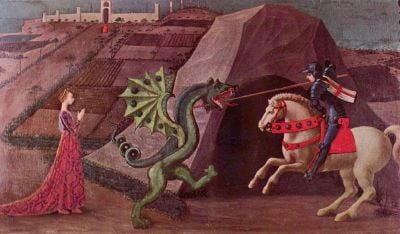
The English flag is a red cross on a white background, commonly called the Cross of Saint George. It was adopted after the Crusades. Saint George, later famed as a dragon-slayer, is also the patron saint of England. The three golden lions or leopards on a red background was the banner of the kings of England derived from their status as Duke of Normandy and is now used to represent the English national football team and the English national cricket team, though in blue rather than gold. The English oak and the Tudor rose are also English symbols, the latter of which is (although more modernized) used by the England national rugby union team.
England has no official anthem; however, the United Kingdom's "God Save the King" is widely regarded as England's unofficial national anthem. However, other songs are sometimes used, including "Land of Hope and Glory" (used as England's anthem in the Commonwealth Games), "Jerusalem," "Rule Britannia," and "I Vow to Thee, My Country." Of these, only Jerusalem specifically mentions England.
Notes
- ↑ Orison Swett Marden and George Raywood Devitt (eds.), Home Lover's Library (Kessinger Publishing, 2003, ISBN 076615324X), 460.
- ↑ Ebenezer Brewer, Wordsworth Dictionary of Phrase and Fable (Wordsworth Editions, 2006, ISBN 1840223103), 340.
- ↑ English is established by de facto usage.
- ↑ Population and household estimates, England and Wales Office for National Statistics. Retrieved November 7, 2022.
- ↑ Assigned on a United Kingdom basis, not constituent country.
ReferencesISBN links support NWE through referral fees
- Boyce, David George. The Irish Question and British Politics, 1868-1996. Palgrave Macmillan, 1996. ISBN 978-0312161064
- Brewer, Ebenezer. Wordsworth Dictionary of Phrase and Fable. Wordsworth Editions, 2006 (original 2001). ISBN 1840223103
- Ferguson, Niall. Empire: The Rise and Demise of the British World Order. Basic Books, 2003. ISBN 0465023282
- Goldthorpe, John H., Catriona Llewellyn, and Clive Payne. Social Mobility and Class Structure in Modern Britain. Oxford: Clarendon Press, 1992 (original 1980). ISBN 978-0198272472
- Macfarlane, Alan. The Culture of Capitalism. Oxford, UK: Blackwell, 1987. ISBN 978-0631136262
- Macfarlane, Alan. The Origins of English Individualism: The Family, Property, and Social Transition. New York: Cambridge University Press, 1979. ISBN 978-0521295703.
- Marden, Orison Swett, and George Raywood Devitt (eds.). Home Lover's Library. Kessinger Publishing, 2003. ISBN 076615324X
- Sampson, Anthony. The Changing Anatomy of Britain. New York: Random House, 1983. ISBN 978-0394531434
External links
All links retrieved February 13, 2024.
- England Lonely Planet
- English Heritage
- Historic England
- Public Health England
Credits
New World Encyclopedia writers and editors rewrote and completed the Wikipedia article in accordance with New World Encyclopedia standards. This article abides by terms of the Creative Commons CC-by-sa 3.0 License (CC-by-sa), which may be used and disseminated with proper attribution. Credit is due under the terms of this license that can reference both the New World Encyclopedia contributors and the selfless volunteer contributors of the Wikimedia Foundation. To cite this article click here for a list of acceptable citing formats.The history of earlier contributions by wikipedians is accessible to researchers here:
- England history
- Geography_of_the_United_Kingdom history
- London history
- Administrative_divisions_of_England history
- English_people history
The history of this article since it was imported to New World Encyclopedia:
Note: Some restrictions may apply to use of individual images which are separately licensed.

